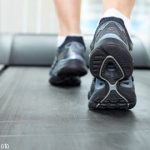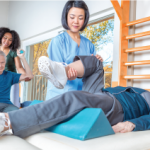After assessing the examination results, the PT has an array of interventions to use in treating spinal pain. The mainstay of a PT treatment for back pain includes therapeutic exercise to increase muscle and joint strength and flexibility, mobilization and manipulation of the spine, postural education and instruction in proper body mechanics and gait, and conditioning to improve stamina for functional activities and tolerance for physical activity. When appropriate, the PT will recommend or fabricate various supports for the spine and offer assistive devices that decreased the stress on the muscles and joints during functional activities. Sometimes a PT will do an ergonomic analysis of the workplace, particularly to ensure that work tasks, physical facilities, and computer workstations support good postural habits and body mechanics.
Maintaining a healthy lifestyle of diet and physical activity is critical to prevent spinal, neck and back pain or avoid a recurrence. Many people who are at risk for back pain simply are afraid to exercise for fear they will injure themselves. Individuals who have not maintained age- and sex-appropriate weight may find that exercise and physical activity is just “too hard.” PTs will also be able to advise a person on how to get started with a safe and pain-free exercise program that will not aggravate neuromusculoskeletal problems and progress that program as tolerance for physical activity increases.
PTs should be directly accessed as a first line of defense in the treatment of back pain lasting more than a few days to ensure that an acute episode does not turn into a recurrent, debilitating condition. As health professionals long recognized by the medical community, PTs will communicate directly with primary care physicians and specialists such as rheumatologists to ensure positive outcomes.
Dr. Guccione is professor and chair, Department of Rehabilitation Science, College of Health and Human Services, George Mason University in Fairfax, Va. Dr. Richardson is professor emeritus, School of Medicine, Duke University Medical Center and chief clinical officer, Universal SmartComp in Washington, Pa.
References
- Fairbank JC, Couper J, Davies JB, O’Brien JP. The Oswestry low back pain disability questionnaire. Physiotherapy. 1980; 66:271-273.
- Roland M, Morris R. A study of the natural history of back pain, part I: Development of a reliable and sensitive measure of disability in low-back pain. Spine. 1983;8:141-144.
- Vernon H, Mior S. The Neck Disability Index: A study of reliability and validity. J Manipulative Physiol Ther. 1991;14:409-415.


